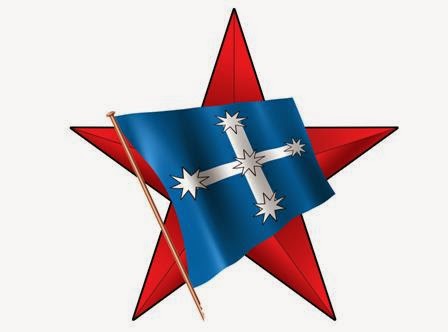Written by: (Contributed) on 30 September 2020
An announcement by the Australian Space Agency (ASA) that there were plans being made to establish a third launch site at Bowen, in Queensland, have revealed sensitive information about its strategic location, with the plans being directly linked to US regional foreign policy. (Two other launch sites have been established near Pt Lincoln in SA and near Nhulunbuy in the NT).
The announcement also confirms the continued significance of Island Chain Theory (ICT) for US-led defence and security considerations; and the significance of the corporate sector, with the ASA planning being conducted on a commercial basis.
In late September, a Queensland Defence sub-section of the Australian’s Business paper, published a short report about plans to establish a third launch site for Australia's space program, at Abbott Point, the deep-water coal port near Bowen, in Queensland. (1) Since being initially established in 2018, the ASA has been pushed into the forefront of US-led regional military planning. A US counterpart was established shortly before, becoming the sixth section of the Pentagon-based US military.
Australia's strategic location in the Asia-Pacific region together with relative political and economic stability has been highly regarded by the US for decades; successive Australian governments have hosted a vast assortment of US military facilities for their regional military and security provision, the most important being Pine Gap in central Australia.
The proposed launch site near Bowen would appear the most strategically-placed facility, to date, with the media release stating 'Bowen is well positioned to support both equatorial and polar orbit missions … and enjoys extensive telecommunications, road, rail and air transport links to Brisbane'. (2) It did not refer, however, to the Enoggera Barracks nearby which is now one of the largest Australian bases in the country after a $770 million upgrade in 2014. The base hosts sensitive Signals facilities for regional surveillance and military deployment. (3)
Bowen is also placed on an axis 150 degrees east and 20 degrees south on an actual size world map. The 150 degrees east stretches from the Kuril Island chain guarding the Sea of Okhotsk in the north, down to King George Island, Antarctica, in the south; the 20 degrees south stretches across the Western Pacific. (4)
From Bowen to Guam, a major US military facility and regional communications hub, an arc swings over the South Pacific and Micronesia to the farthest Western Pacific islands and Antarctica, depicting the range across the area.
The area concerned is regarded by US-led military planners as Oceania and ICT (Information and Communications Technology) Area 3, and particularly sensitive. The planners aim to contain and encircle China and their military from ready access across island chains. (See diagram) The Pentagon fears China gaining ready access into Oceania and presenting a credible challenge to traditional hegemonic positions.
The media release also divulged information about the corporate sector’s involvement with the ASA, which they identify as being worth an estimated $1.1 trillion by 2040. Reference, therefore, to 'Australia's ability to export space to international partners', can be seen as a plan to use technological advancement to capitalise on the venture with 'maximum financial return from launches'. (5) It is part of the Department of Industry, Science and Technology.
It is usual practice, however, for defence organisations to lease capacity on commercial satellite systems, as specified in the media release with the statement that 'the Bowen space port could thus emerge as a key location to support Defence's space requirements in coming years … to support the operational needs of the Australian Defence Forces in space'. (6)
And finally, what this means for the 10,000 inhabitants of Bowen, home of the Big Mango, a quiet country town, whose residents’ livelihoods include market gardening and tourism, has not been specified to date. It would appear to have escaped the attention of the Pentagon. The tranquil lifestyles of the residents of Bowen, nevertheless, may well be shattered for ever as their town is used for US-led regional military planning and operations for theatres of war and real-war scenarios across the wider region.
We need an independent foreign policy!
1. Blast off from Bowen, Queensland Defence, Australian, 25 September 2020.
2. Ibid.
3. Wikipedia: Enoggera Barracks.
4. Map of the World, Peters Projection, Actual Size.
5. Australian, op.cit., 25 September 2020.
6. Ibid.






